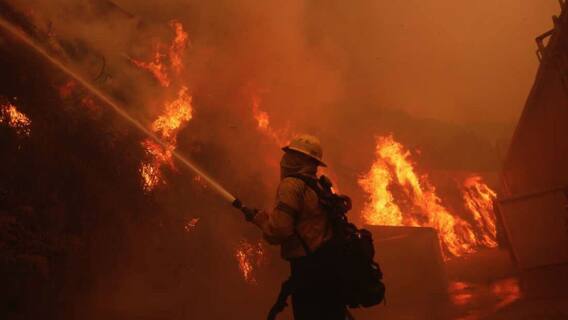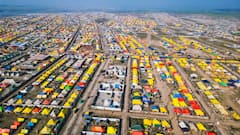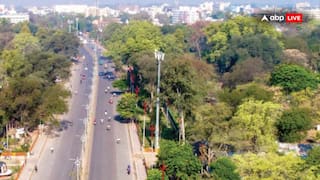Explorer
Advertisement
Lockdown Effect: NASA Data Shows A 20-Year-Dip In Aerosol Levels In North India
Satellite data published by the US space agency National Aeronautics and Space Administration (NASA) show that air pollution over northern India has recorded a 20-year-low for this time of the year. There is a marked difference in the levels of aerosol which are at its lowest in 20 years.

( Getty Images)
New Delhi: The coronavirus pandemic has made lockdown a common phenomenon all over the world. And as the humans retreated within, the flora and fauna have thrived outside. India entered a nationwide lockdown on 24th March and it will continue till May 3 and during this time we have witnessed wild animals coming out of hiding and taking over public spaces. But the other major impact of the lockdown has been the reduction of air pollution. So much so that earlier this month, Jalandhar’s residents were treated to a glorious view of the snow-capped Dhauladhar mountain ranges which are over 200 km away.
Now satellite data published by the US space agency National Aeronautics and Space Administration (NASA) show that air pollution over northern India has recorded a 20-year-low for this time of the year. There is a marked difference in the levels of aerosol which are at its lowest in 20 years. Aerosols are small particles of solid or liquid droplets that are suspended in the air. The causes can be both natural and man-made. Fog, mist, and dust are examples of natural aerosol whereas anthropogenic aerosols include vehicular smoke and particulate matter. Aerosols can be a health hazard and can damage the lungs and heart.
Pawan Gupta, a Universities Space Research Association (USRA) scientist at NASA''s Marshall Space Flight Center said in a report by ANI, “We knew we would see changes in atmospheric composition in many places during the lockdown. But I have never seen aerosol values so low in the Indo-Gangetic Plain at this time of year."
According to the report by ANI, the data shows the aerosol optical depth (AOD) in 2020 compared to the average for 2016-2019. Aerosoles can scatter or absorb sunlight depending on its physical properties. Optical depth is a measure of how light is absorbed or reflected by airborne particles as it travels through the atmosphere. If aerosols are concentrated near the surface, an optical depth of 1 or above indicates very hazy conditions. An optical depth, or thickness, of less than 0.1 over the entire atmospheric vertical column is considered "clean." The data were retrieved by the Moderate Resolution Imaging Spectroradiometer (MODIS) on NASA's Terra satellite.
Also Check: Coronavirus In India LIVE Updates
In the first few days of the lockdown, it was difficult to observe a change in the pollution signature. "We saw an aerosol decrease in the first week of the shutdown, but that was due to a combination of rain and the lockdown," said Gupta in the report.
Generally, aerosol level climbs up after heavy rainfall, but this did not happen on March 27 when many areas in North India received heavy rainfall.
"After the rainfall, I was really impressed that aerosol levels did not go up and return to normal. We saw a gradual decrease and things have been staying at the level we might expect without anthropogenic emissions," Gupta said.
However, the drop in aerosols has not replicated in southern India which is still a little hazier and according to the data seems to slightly higher than in the past four years. Although there no clear reason yet, it be related to recent weather patterns, agricultural fires, winds, or other factors.
Experts have warned that the gains from lockdown all over the world will be short-lived especially as countries will resume industrial activities unless stringent environmental laws are followed.
(with inputs from ANI)
Satellite data published by the US space agency National Aeronautics and Space Administration (NASA) show that air pollution over northern India has recorded a 20-year-low for this time of the year
Follow Breaking News on ABP Live for more latest stories and trending topics. Watch breaking news and top headlines online on ABP News LIVE TV
View More
Advertisement
Trending News
Advertisement
Advertisement
Top Headlines
India
India
Cities
World
Advertisement


Sayantan Ghosh
Opinion






































